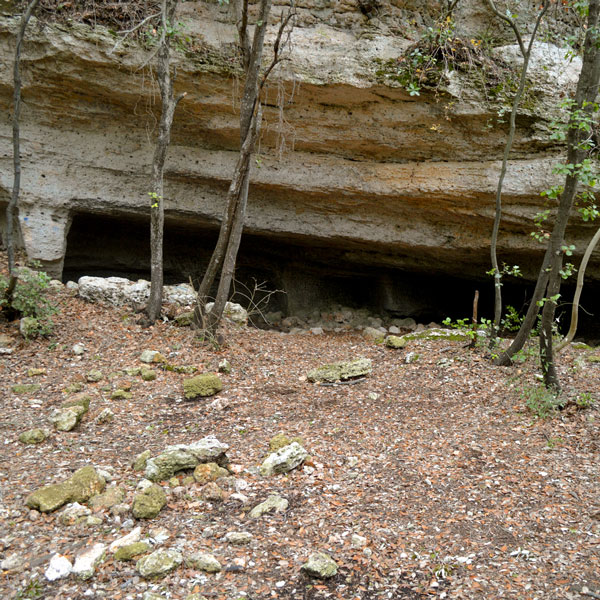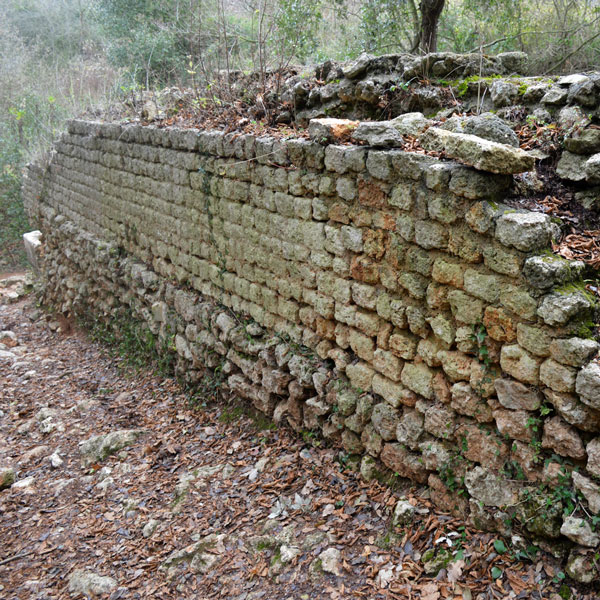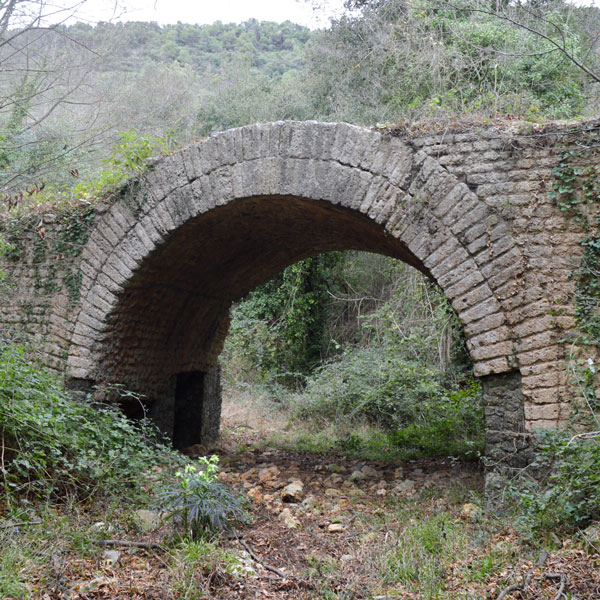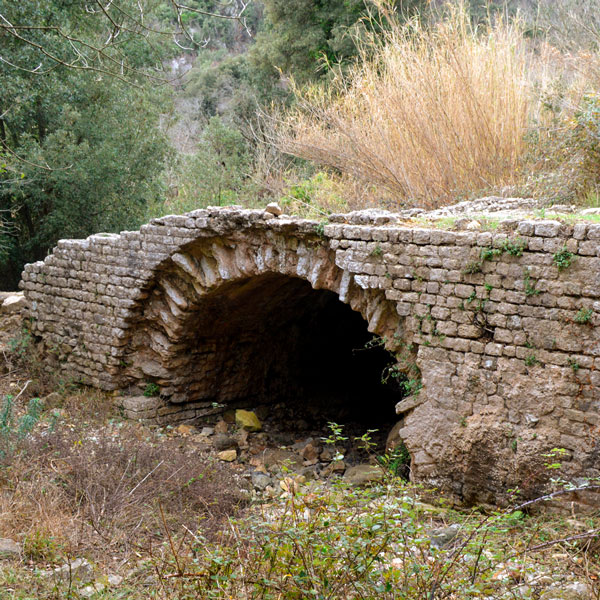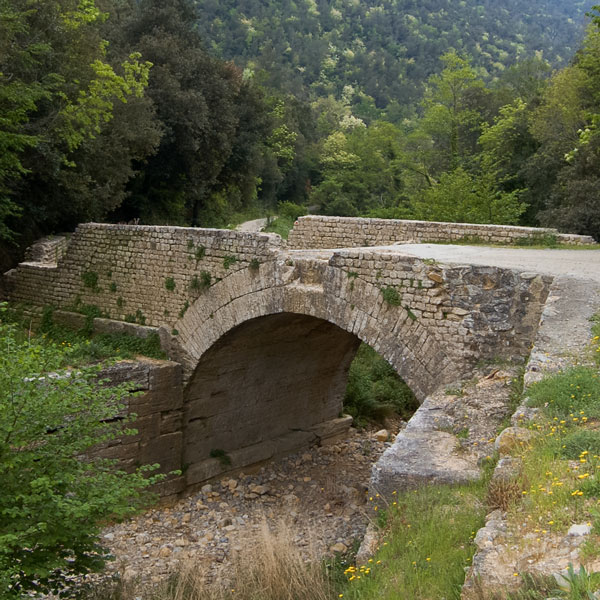The Magnone bridge
A roman bridge in Val Ponci
The remains of the roman Magnone bridge are situated in a thick woodland setting at around 290 m a.s.l. in proximity of the head of Val Ponci under San Giacomo where the precedent river basin was cut with the formation of the current Val Ponci fossil valley system.
This bridge was also part of the Augustan structures of the via Iulia Augusta, initiated by the emperor Augustus in 13 BCE so to connect the area of the Po Valley to southern Gaul. The road reached the coast at Vada Sabatia (Vado Ligure). Of all the infrastructures of this roman road in Val Ponci there are five bridges datable between the Augustan age and 125 CE.
This was first bridge encountered for someone coming from Vada Sabatia, with a single arch with a width between 5,50 and 6,0 m; it was built slightly inclined so to mitigate the height difference and make the passage safer. Located in a geographic area belonging to the Finale Stone substrate the bridge was built mostly using the quartzite of the area and, in less quantity, dolomitic-limestone with a petit appareil or “small apparatus” technique coating of small blocks and an unusual stone sign that signed the level of the road.
Of the original structure only a part of one of the abutments remains on one side in small square blocks, part of the arch and part of the ramp. Part of the arch collapsed into the riverbed.
To discover close to the Magnone bridge
HOW TO REACH
![]() THE MAGNONE BRIDGE
THE MAGNONE BRIDGE
How to reache the site
The Val Ponci can be explored on foot or by bike starting from Verzi or coming down from Colla di San Giacomo close to Magnone.
Visit
Guided tours in the valley are part of the Archeotrekking events, organised by the Archaeological Museum of Finale.
Info
![]() Orario di Visita
Orario di Visita
![]() Calendario delle visite
Calendario delle visite
GALLERY
[ls_content_block id=”7170″]




